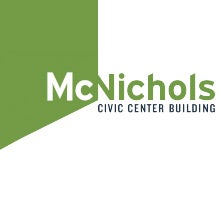exhibitions

Bauhaus 100: Design and Sustainability
09/14/2019 - 12/22/2019
Boettcher Cultural Pavilion, second floor, McNichols Civic Center Building
September 14 – December 22, 2019
The Bauhaus movement was forged in 1919 Germany, a school of thought focused on good design, and affordable, well-made objects. Taught by the Staatliches Bauhaus in Germany, one of the earliest and most successful schools of art and design, the combination of art, craft, architecture, graphic design, interior design, industrial design and even typography became the epitome of the harmony between function and form. The school’s slogan “art and technology: a new unity” still rings true today. The Bauhaus movement became the pillar for modernism worldwide and is still in use in architecture and design today.
This exhibition is designed to inspire a conversation about sustainable practices, highlighting beautiful, well-designed and well-made objects likely to be kept long-term. Sustainable design focuses on profitability without undue cost to the environment and the user. How can we collectively use the ideals of the Bauhaus school to inspire long-lasting change in our construction, design and purchasing practices?
Related events:
McNichols Project: Sept. 21, 6-9 p.m.
Bauhaus 100: Diseño y Sostenibilidad
Pabellón Cultural Boettcher, segundo piso, Edificio “McNichols” del Centro Cívico
Septiembre 14 – Diciembre 22, 2019
El movimiento Bauhaus, surgido en Alemania en 1919, es una escuela de pensamiento centrada en el buen diseño y en objetos asequibles y bien hechos. Impartida por la Staatliches Bauhaus en Alemania, una de las primeras y más exitosas escuelas de arte y diseño, la combinación de arte, artesanía, arquitectura, diseño gráfico, diseño de interiores, diseño industrial e incluso tipografía se convirtió en el epítome de la armonía entre la función y forma. El lema de la escuela "arte y tecnología: una nueva unidad" todavía suena cierto hoy en día. El movimiento Bauhaus se convirtió en el pilar del modernismo en todo el mundo y todavía se usa en arquitectura y diseño en la actualidad.
Esta exposición está diseñada para inspirar una conversación sobre prácticas sostenibles, destacando objetos hermosos, bien diseñados y también bien hechos, que probablemente se tendrán por mucho tiempo. El diseño sostenible se centra en la rentabilidad sin un costo excesivo ni para el medio ambiente ni para el usuario. ¿Cómo podemos utilizar colectivamente los ideales de la escuela Bauhaus para inspirar un cambio duradero en nuestras prácticas de construcción, diseño y compra?
Evento relacionado:
Proyecto McNichols: Sept. 21, 6-9 p.m.

